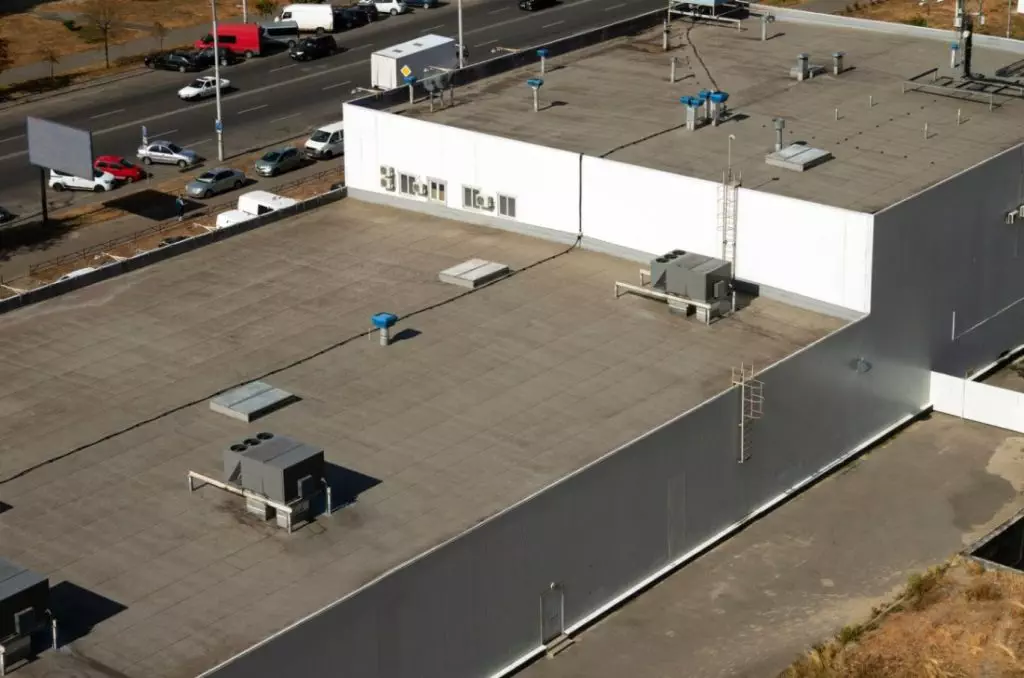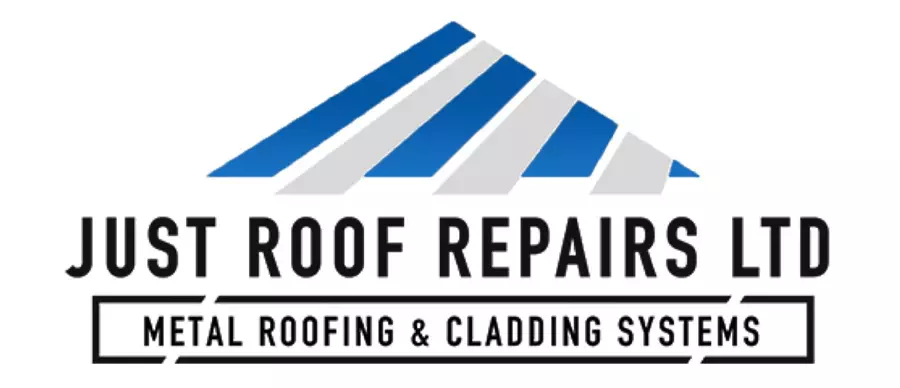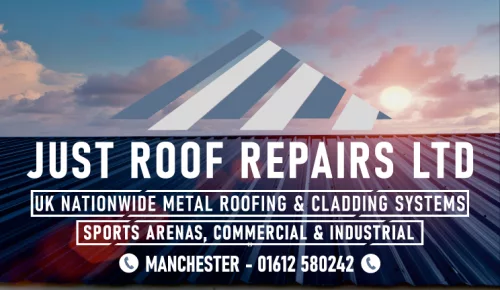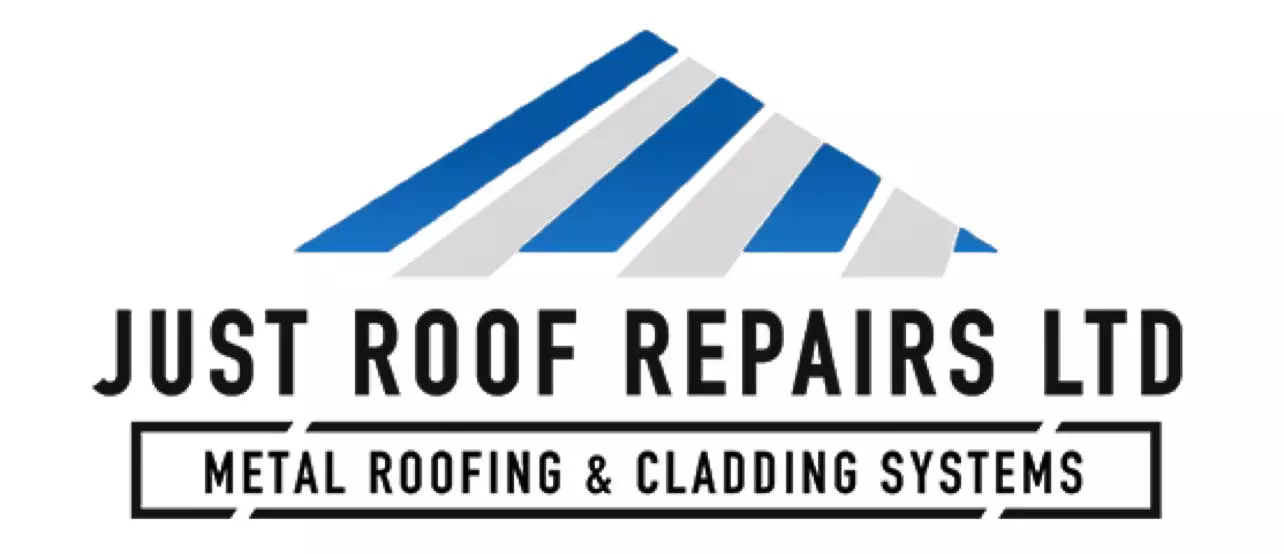In the UK, weather conditions pose significant challenges for commercial roofs. Frequent rain can lead to leaks if moisture barriers fail, while strong winds may stress roofing structures. Temperature fluctuations cause materials to expand and contract, increasing the risk of damage. Understanding these factors is essential for maintaining roof integrity. But how can you guarantee your roofing system stands resilient against such unpredictable elements? The answers lie in careful analysis and strategic planning.

Key Takeaways
- Frequent rain in the UK can lead to water accumulation, risking leaks and structural damage if proper moisture barriers and drainage systems are not in place.
- High winds common in the UK can exert pressure on roofs, making wind-resistant materials and aerodynamic designs crucial for maintaining structural integrity.
- Temperature fluctuations can cause thermal expansion and contraction, necessitating compatible roofing materials to prevent leaks and structural stress.
- Snow and ice accumulation can exceed load limits, requiring effective drainage solutions and regular inspections to mitigate risks of roof failure.
- UV radiation can degrade roofing materials over time; protective coatings and regular maintenance are essential for prolonging material lifespan in the UK climate.
The Impact of Rain on Commercial Roofs
When rain falls, it not only impacts the immediate environment but also poses considerable challenges to commercial roofs. You need to take into account how water accumulation can weaken structural integrity, leading to leaks and costly damage.
Effective moisture barriers are crucial to prevent water infiltration, but they must be properly installed and maintained. Additionally, rainwater harvesting systems can be integrated to collect and utilise rainwater, reducing runoff and promoting sustainability.
However, if these systems aren’t designed correctly, they can exacerbate drainage issues, inviting further complications. Regular inspections and proactive maintenance are essential to guarantee your roof withstands the effects of rain, protecting your investment and assuring longevity.
Balancing these factors can greatly improve your roof’s performance in wet conditions.
Wind and Its Effects on Roofing Systems
Though wind might seem like a mere nuisance, its effects on roofing systems can be profound and damaging. High winds can exert significant pressure on a roof, leading to potential structural failures or leaks.
To combat this, roofing systems must prioritise wind resistance through robust materials and secure fastening methods. Aerodynamic design plays an important role as well; roofs with slopes and curves can help deflect wind rather than allowing it to build up pressure.
Additionally, poorly designed roofs can act as sails, exacerbating wind loads and increasing the risk of damage. Understanding these dynamics is essential for maintaining roof integrity and ensuring longevity, particularly in areas prone to severe weather conditions typical in the UK.
Temperature Fluctuations and Roof Materials
Wind’s impact on roofing systems is just one aspect of how environmental factors can influence roof performance.
Temperature fluctuations in the UK cause significant thermal expansion and contraction in roof materials, affecting their integrity over time. When selecting roofing materials, you’ll need to take into account material compatibility; some materials expand or contract at different rates, leading to potential stress points.
For instance, a metal roof might expand more than an underlying membrane, causing seams to separate or crack. This issue can compromise water resistance and lead to leaks.
Regular inspections and maintenance can help you identify and address these problems early, ensuring your roof remains effective despite the challenges posed by temperature variations.
Snow and Ice Accumulation Challenges
When snow and ice accumulate on your commercial roof, structural load concerns become essential.
You need to assess whether your roof can handle the added weight, as excessive accumulation can lead to potential structural failure.
Additionally, the efficiency of your drainage system plays a crucial role in preventing water pooling and ice dam formation, which can exacerbate these challenges.
Structural Load Concerns
As winter approaches, the accumulation of snow and ice on commercial roofs poses significant structural load concerns that can jeopardise the integrity of the building.
You need to understand that the weight of snow and ice can exceed design limits, necessitating a thorough weight assessment. Inadequate load distribution may lead to localised stress, resulting in potential roof failure.
Regular inspections and maintenance are essential to identify areas where snow collects, as these hotspots can cause uneven loading.
Additionally, consider the roof’s design and materials, as they play a vital role in handling these loads.
Drainage System Efficiency
The integrity of a commercial roof hinges not only on its structural load capacity but also on the effectiveness of its drainage system.
In the UK, snow and ice accumulation can severely hinder drainage system efficiency, leading to potential water damage. A well-planned drainage system design is vital; it should facilitate the rapid removal of melted snow while preventing ice blockages.
Regular drainage maintenance practices are equally important, as neglect can result in clogged gutters and downspouts, exacerbating the risk of pooling water and subsequent structural issues.
You must guarantee that your drainage system is consistently evaluated and adjusted to cope with seasonal weather changes, safeguarding your investment and maintaining peak roof performance.
UV Radiation and Its Deteriorating Effects
UV radiation can greatly degrade commercial roofing materials, leading to a reduction in their lifespan.
Understanding the specific mechanisms of UV damage helps you choose the right materials and protective coatings to improve durability.
UV Damage Mechanisms
While you mightn’t see it happening in real-time, ultraviolet (UV) radiation steadily degrades roofing materials over time, leading to notable performance issues.
The UV exposure effects manifest as cracking, discolouration, and loss of flexibility, compromising the roof’s integrity. This degradation stems from the breakdown of the chemical bonds in roofing materials, particularly in coatings and membranes.
To combat these detrimental effects, implementing UV resistance strategies is essential. These can include using reflective coatings, selecting materials with inherent UV resistance, and regular inspections to identify early signs of damage.
Longevity of Roofing Materials
As roofing materials endure prolonged exposure to UV radiation, their longevity can greatly diminish, leading to costly repairs or replacements.
UV rays initiate a breakdown of the chemical bonds within roofing materials, which compromises their structural integrity. This degradation directly affects the roofing lifespan, reducing the effectiveness of the material.
For instance, asphalt shingles can become brittle, while membranes may lose flexibility, both resulting in increased susceptibility to weather-related damage.
Evaluating material durability is vital; some materials are engineered to withstand UV exposure better than others, ultimately ensuring longer-lasting performance.
Protective Coatings and Solutions
To combat the detrimental effects of UV radiation on roofing materials, applying protective coatings is crucial.
These weatherproof coatings serve as protective barriers that shield your roof from harmful sun exposure, which can lead to premature degradation. UV rays break down the molecular structure of roofing materials, causing cracking, fading, and loss of insulation properties.
By utilising advanced weatherproof coatings, you not only improve the durability of your roof but also boost its energy efficiency. Look for products with reflective properties that minimise heat absorption, further extending the lifespan of your roofing system.
Regular maintenance and reapplication of these protective barriers provide ongoing defence against UV damage, safeguarding your investment and maintaining peak performance over time.
Humidity Levels and Moisture Intrusion
Humidity levels play a critical role in determining commercial roof performance, often leading to moisture intrusion if not properly managed. High humidity can compromise the effectiveness of moisture barriers, allowing water to penetrate roofing materials.
If you don’t implement effective humidity control measures, you risk structural damage, mould growth, and reduced insulation efficiency. Regular inspections are essential to identify potential breaches in moisture barriers, as even small gaps can lead to significant issues over time.
Additionally, consider utilising vapour retarders to mitigate moisture buildup within the roofing system. By prioritising humidity control and maintaining robust moisture barriers, you can safeguard your commercial roof against the detrimental effects of excessive humidity, ensuring long-term performance and durability.
The Role of Drainage Systems in Weather Resistance
Effective water management is essential for maintaining the integrity of your commercial roof, especially in adverse weather conditions.
A well-designed drainage system not only channels water away but also minimises the risk of structural damage caused by pooling or excessive moisture.
Understanding the relationship between drainage efficiency and roof longevity will help you optimise your building’s performance in varying climates.
Effective Water Management
A well-designed drainage system is vital for maintaining the integrity of commercial roofs, especially in areas prone to heavy rainfall or snow accumulation. Effective drainage design prevents water from pooling, which can compromise waterproof membranes and lead to leaks.
You must guarantee that the system includes adequate slope and strategically placed drains to facilitate efficient water flow. Regular inspections are imperative; debris can obstruct drainage paths, causing water to accumulate and increase load on the roof structure.
Additionally, incorporating overflow systems can further improve performance during extreme weather events. By prioritising proper drainage design, you can greatly extend the life of your commercial roof and minimise maintenance costs associated with water-related damage.
Preventing Structural Damage
Proper drainage systems play a pivotal role in preventing structural damage to commercial roofs, particularly during severe weather conditions. They guarantee that water is efficiently channelled away, maintaining the roof’s structural integrity.
When rainwater accumulates, it can lead to increased weight and potential leaks, compromising weather resilience. You need to regularly inspect and maintain drainage components, such as gutters and downspouts, to prevent blockages and guarantee ideal flow.
Additionally, incorporating features like scuppers or internal drains can improve water management. By prioritising effective drainage solutions, you not only safeguard your roof against water-related issues but also extend its lifespan, ultimately protecting your investment in the long run.
Seasonal Changes and Maintenance Needs
While seasonal changes can bring varying weather conditions that affect commercial roofs, they also dictate specific maintenance needs to secure peak performance.
You should conduct seasonal inspections to assess the roof’s condition after harsh weather events, like heavy rain or snow. These inspections help identify wear, potential leaks, or debris buildup that could impact the roof’s integrity.
Establishing maintenance schedules customised to each season guarantees timely interventions, such as clearing gutters in autumn or checking for ice damming in winter.
Regular upkeep not only extends the lifespan of the roof but also improves its resilience against fluctuating weather patterns. Staying proactive with these measures can greatly reduce costly repairs and guarantee your commercial roof functions effectively year-round.
Selecting the Right Roofing Materials for Weather Resilience
Choosing the right roofing materials is essential for guaranteeing your commercial roof can withstand the diverse challenges posed by various weather conditions.
Focus on material durability to resist harsh elements like heavy rain, snow, and UV exposure. For example, materials like EPDM or TPO offer excellent longevity and can handle temperature fluctuations effectively.
Additionally, consider the insulation properties of your chosen materials. High-quality insulation not only elevates energy efficiency but also mitigates thermal expansion and contraction, which can lead to structural issues.
Selecting the appropriate combination of durable materials and effective insulation will considerably improve your roof’s performance, ultimately safeguarding your investment and reducing future maintenance costs.
Prioritise these factors to guarantee long-lasting, weather-resistant roofing.
Long-term Strategies for Weather-related Roof Performance
To guarantee your commercial roof performs well over time, implementing long-term strategies customised to weather-related challenges is essential.
Focus on energy efficiency strategies that bolster thermal performance and reduce heating and cooling costs. Incorporate advanced roofing insulation techniques, such as spray foam or rigid board insulation, to mitigate heat loss in winter and prevent overheating during summer months.
Regular maintenance, including inspections and prompt repairs, helps you identify potential issues caused by harsh weather conditions.
Additionally, consider installing reflective roofing membranes to minimise the impact of UV radiation and improve energy efficiency. By focusing on long-term strategies that prioritise durability and energy efficiency, you can ensure your commercial roof remains resilient against weather challenges for years to come.
FAQ (Frequently Asked Questions)
Q1: How can weather damage a commercial roof?
Weather conditions such as rain, wind, snow, and UV exposure can deteriorate roofing materials, leading to leaks, structural damage, and reduced lifespan. It’s essential to maintain moisture barriers, ensure strong wind resistance, and regularly inspect for UV degradation and ice damage.
Q2: How often should I inspect my commercial roof?
Commercial roofs should be inspected at least twice a year and after significant weather events like storms or heavy snow. Regular inspections help identify minor issues before they escalate into costly repairs.
Q3: What are the best roofing materials for UK weather?
Materials like EPDM, TPO, and metal roofing are highly durable and weather-resistant, making them ideal for the UK’s varied climate. These materials are designed to handle rain, wind, snow, and UV exposure efficiently.
Q4: Can a roof withstand heavy snow?
Yes, provided that the roof is designed to handle the additional load. Regularly clearing snow and ensuring an effective drainage system are vital for avoiding structural damage.
Q5: How can I prevent UV damage to my commercial roof?
Applying UV-resistant coatings, choosing UV-resistant materials, and regular maintenance can help prevent UV damage. Reflective coatings can also reduce heat absorption, further prolonging your roof’s lifespan.
Conclusion
The weather plays a crucial role in the performance and longevity of commercial roofs. By understanding the challenges posed by rain, wind, temperature fluctuations, snow, ice, and UV radiation, you can make informed decisions to protect your roof. Regular inspections, proper maintenance, and the selection of durable materials tailored to your region’s climate will significantly enhance your roof’s resilience and ensure long-term performance. Stay proactive with your roof care to safeguard your business investment and reduce the risk of costly repairs in the future.


